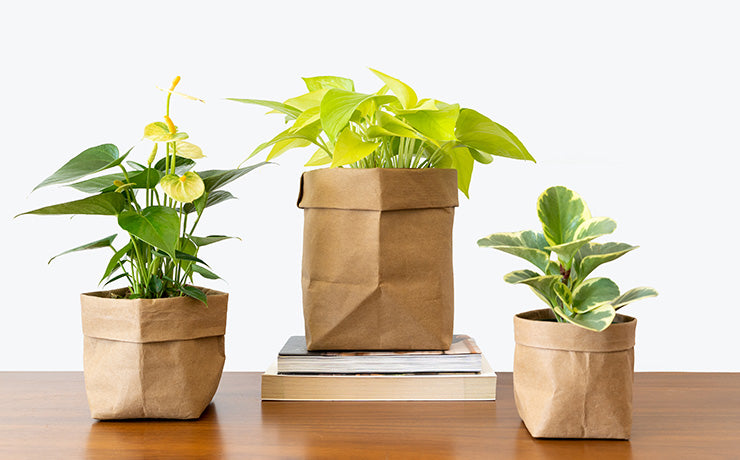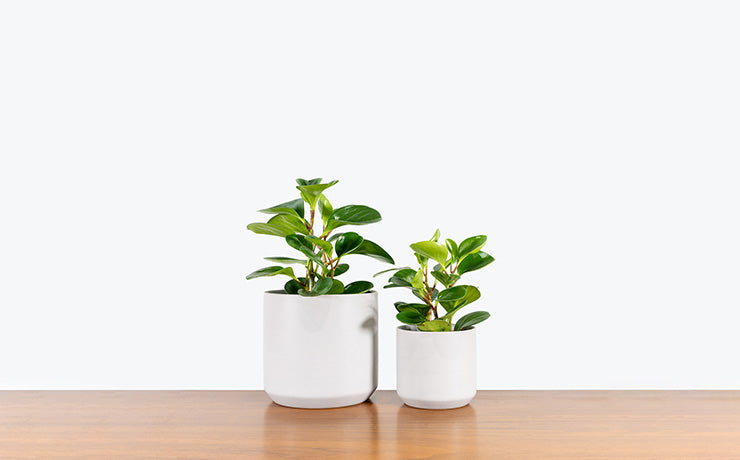Glossary
Plant Care Library
L
Lady Finger Cactus

How to care for Lady Finger Cactus
They enjoy some direct sun, but they'll also do well in bright, indirect light. It is best to place this plant somewhere where it will receive some nice morning sun, or a couple hours of afternoon sun, and then indirect light the rest of the day.
They will do best in bright light. A nice bright place inside your home would be on the window sill or a stool that is right next to a window, either with or without blinds, depending on if the plant can handle sun. Remember that plants will grow based on how much light they receive.
They like the soil to be completely dry before the next watering. That usually takes about 4 weeks in an average home environment. It will vary depending on the time of year, your environment and lighting conditions, but for them, it's always safer to underwater or water when you see signs of lack of water (i.e. wrinkly or soft leaves). Water a little more often in the warmer months.
Their humidity requirement is low, so do not mist them or put them in an enclosed terrarium.
As with all succulents, overwatering is sure to be fatal, so err on the side of too dry rather than too wet, never letting it sit in water. If the side of the plant facing the sun starts to turn yellow or brown, move the plant to a spot where it will receive less direct sunlight than it was receiving.
This plant is moderately toxic and can cause some adverse reactions when ingested so it is best to not let your pets eat it, which we advise for all plants in general. The severity of the reaction will depend on how much of the plant is ingested but, if you know your pet typically does not eat your plants, this plant will be suitable for your home..
Learn MoreView PlantLavender Plant
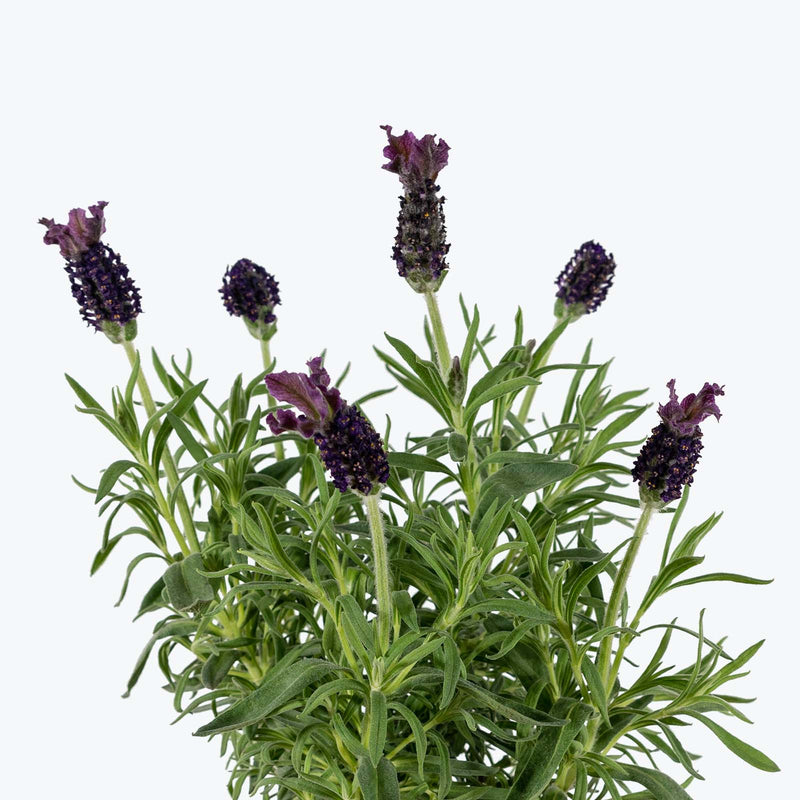
How to care for Lavender Plant
Lavender Plant loves as much sun as possible. The best spot for them is where they can see the sun during the majority of the day.
Lavender Plant will do best in bright light. A nice bright place inside your home would be on the window sill or a stool that is right next to a window, either with or without blinds, depending on if the plant can handle sun. Remember that plants will grow based on how much light they receive.
Lavender Plant prefers to be on the drier side, so water only when the top two-thirds of the soil is dry to the touch. That usually takes about 2 weeks in an average home environment. It will vary depending on the time of year, your environment and lighting conditions, but for them, it's always safer to underwater or water when you see signs of lack of water (i.e. droopy, floppy, or soft leaves). Expect to water more often in brighter light and less often in lower light.
Their humidity requirement is low, so do not mist Lavender Plant or put them in a terrarium.
Check soil moisture and water Lavender Plant when the top inch of soil is dry. When watered, give enough water to wet the soil thoroughly, drain the excess water, and then let it go again until the soil dries down. In the winter, water when the top 2 inches of soil is dry because of slowed plant growth. For the best light, rotate the pot each week so that all sides of the plant receive some direct sunlight. Also helpful to note, pruning your lavender flowers is good for the plant; it will increase sprouting and the thickness of the flowers.
Lavender Plant is moderately toxic and can cause some adverse reactions when ingested so it is best to not let your pets eat it, which we advise for all plants in general. The severity of the reaction will depend on how much of the plant is ingested but, if you know your pet typically does not eat your plants, this plant will be suitable for your home..
View PlantLedebouria Petiolata Leopard Lily
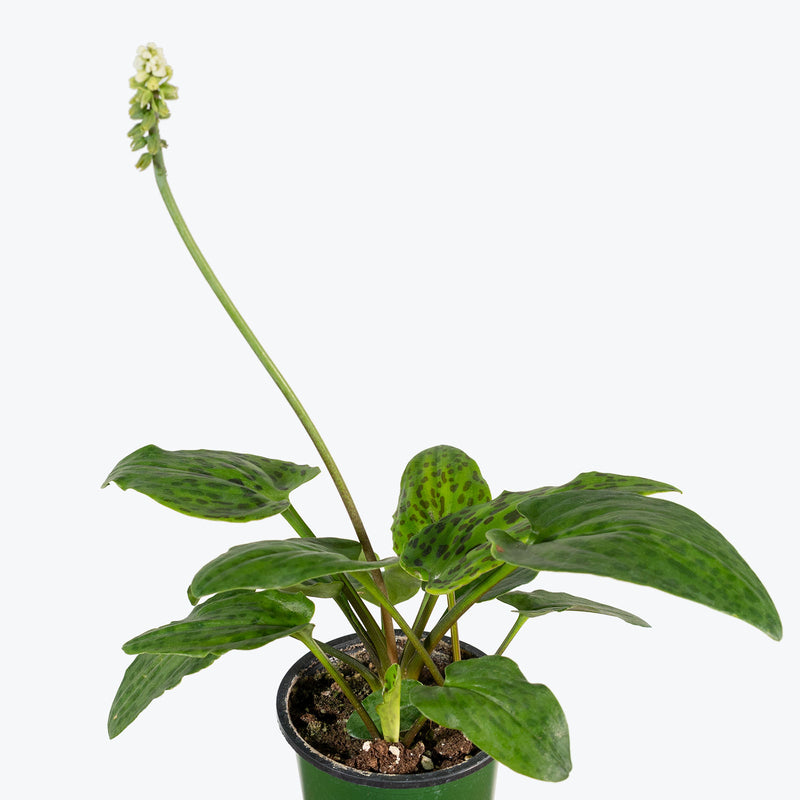
How to care for Ledebouria Petiolata Leopard Lily
They should not be in a position to see the sun directly, although early morning or late evening sun is fine. Filtered sunlight through a sheer curtain is best and most homes are comprised primarily of indirect sunlight. The best spot for them is where they do not see the sun during the majority of the day but still get bright, indirect light.
They will thrive in bright light, but also can tolerate medium light. A good medium-light place in your home would be in the middle of a room that has a regular size window. They can be placed anywhere between the middle of the room and the window. Remember that plants will grow based on how much light they receive.
They like the soil to be relatively dry before the next watering. That usually takes about 2 weeks in an average home environment. It will vary depending on the time of year, your environment and lighting conditions, but for them, it's always safer to underwater or water when you see signs of lack of water (i.e. droopy, floppy, or soft leaves). Expect to water more often in brighter light and less often in lower light.
They can live in any average home humidity condition and are fairly hardy.
Fertilize with a diluted, balanced liquid fertilizer during the active growing season (spring and summer). Reduce feeding in the winter when growth naturally slows. Be cautious of pests such as aphids and mealybugs, and treat them promptly if they appear.
This plant is moderately toxic and can cause some adverse reactions when ingested so it is best to not let your pets eat it, which we advise for all plants in general. The severity of the reaction will depend on how much of the plant is ingested but, if you know your pet typically does not eat your plants, this plant will be suitable for your home..
View PlantLemon Cypress
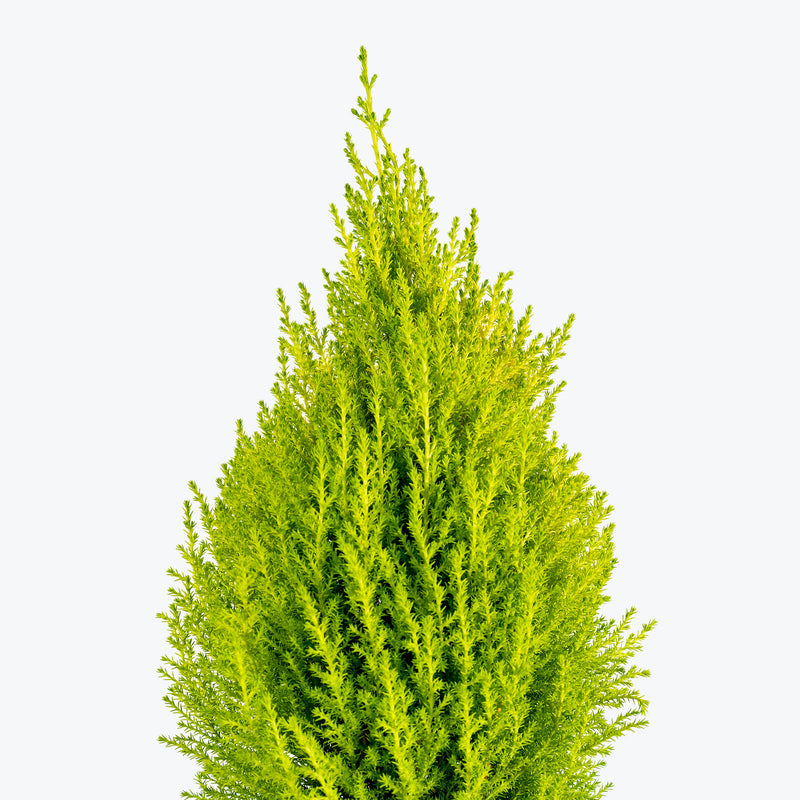
How to care for Lemon Cypress
Lemon Cypress loves as much sun as possible. The best spot for them is where they can see the sun during the majority of the day.
Lemon Cypress will do best in bright light. A nice bright place inside your home would be on the window sill or a stool that is right next to a window, either with or without blinds, depending on if the plant can handle sun. Remember that plants will grow based on how much light they receive.
Lemon Cypress needs to be watered when the top half of the soil is dry to the touch. That usually takes about 1 week in an average home environment. It will vary depending on the time of year, your environment and lighting conditions, but it's always safer to underwater or give the soil a check before you water again.
Lemon Cypress can live in any average home humidity condition and are fairly hardy.
Rotate Lemon Cypress when watering to prevent growing in one direction. Fertilize with a balanced, all-purpose fertilizer during the growing season, typically from spring through late summer. Do not fertilize in winter when the plant's growth naturally slows. Prune in late winter or early spring to maintain shape and promote denser foliage.
You can feel comfortable having Lemon Cypress around your home in the potential case where your pet feels like nibbling on it. However, we typically recommend keeping your pets from eating any of your houseplants..
View PlantLemon Tree
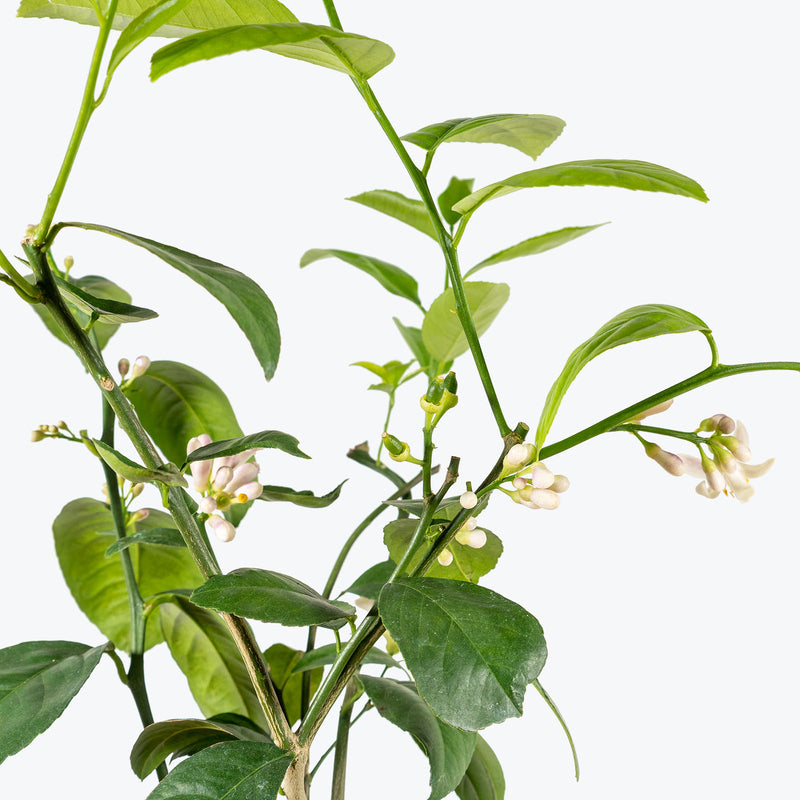
How to care for Lemon Tree
They love as much sun as possible. The best spot for them is where they can see the sun during the majority of the day.
They will do best in bright light. A nice bright place inside your home would be on the window sill or a stool that is right next to a window, either with or without blinds, depending on if the plant can handle sun. Remember that plants will grow based on how much light they receive.
They need to be watered when the top half of the soil is dry to the touch. That usually takes about 1 week in an average home environment. It will vary depending on the time of year, your environment and lighting conditions, but it's always safer to give the soil a check before you water again.
They like a high humidity environment, give them a mist daily or as often as possible. Alternatively, you can put them around a humidifier. Although they won't die if they don't receive enough humidity, their leaves may have some dry, crunchy, or yellow edges.
Lemon trees will not tolerate hot or cold drafts, so keep them away from all air conditioning and heating vents, as well as any open windows during the winter. Consistency is key with citrus plants. Train your plant to go outside in the warmer months by allowing the plant to sit outside in more and more sun each week. Abrupt changes in light and temperature will cause leaf drop so change environmental conditions gradually.
This plant is moderately toxic and can cause some adverse reactions when ingested so it is best to not let your pets eat it, which we advise for all plants in general. The severity of the reaction will depend on how much of the plant is ingested but, if you know your pet typically does not eat your plants, this plant will be suitable for your home..
Learn MoreView PlantLemon Tree Pink Variegated

How to care for Lemon Tree Pink Variegated
Lemon Tree Pink Variegated loves as much sun as possible. The best spot for them is where they can see the sun during the majority of the day.
Lemon Tree Pink Variegated will do best in bright light. A nice bright place inside your home would be on the window sill or a stool that is right next to a window, either with or without blinds, depending on if the plant can handle sun. Remember that plants will grow based on how much light they receive.
Lemon Tree Pink Variegated needs to be watered when the top half of the soil is dry to the touch. That usually takes about 1 week in an average home environment. It will vary depending on the time of year, your environment and lighting conditions, but it's always safer to underwater or give the soil a check before you water again. Expect to water more often in brighter light and less often in lower light.
Lemon Tree Pink Variegated likes a high humidity environment, give them a mist daily or as often as possible. Alternatively, you can put them around a humidifier. Although they won't die if they don't receive enough humidity, their leaves may have some dry, crunchy, or yellow edges.
Lemon Tree Pink Variegated will not tolerate hot or cold drafts, so keep them away from all air conditioning and heating vents, as well as any open windows during the winter. Consistency is key with citrus plants and avoids keeping the soil too wet, as this will affect the growth of your plant. Train your plant to go outside in the warmer months by allowing the plant to sit outside in more and more sun each week until it is in full sun for about 8 hours a day. Abrupt changes in light and temperature will cause leaf drop so change environmental conditions gradually.
Lemon Tree Pink Variegated is moderately toxic and can cause some adverse reactions when ingested so it is best to not let your pets eat it, which we advise for all plants in general. The severity of the reaction will depend on how much of the plant is ingested but, if you know your pet typically does not eat your plants, this plant will be suitable for your home..
Learn MoreView PlantLily of the Valley
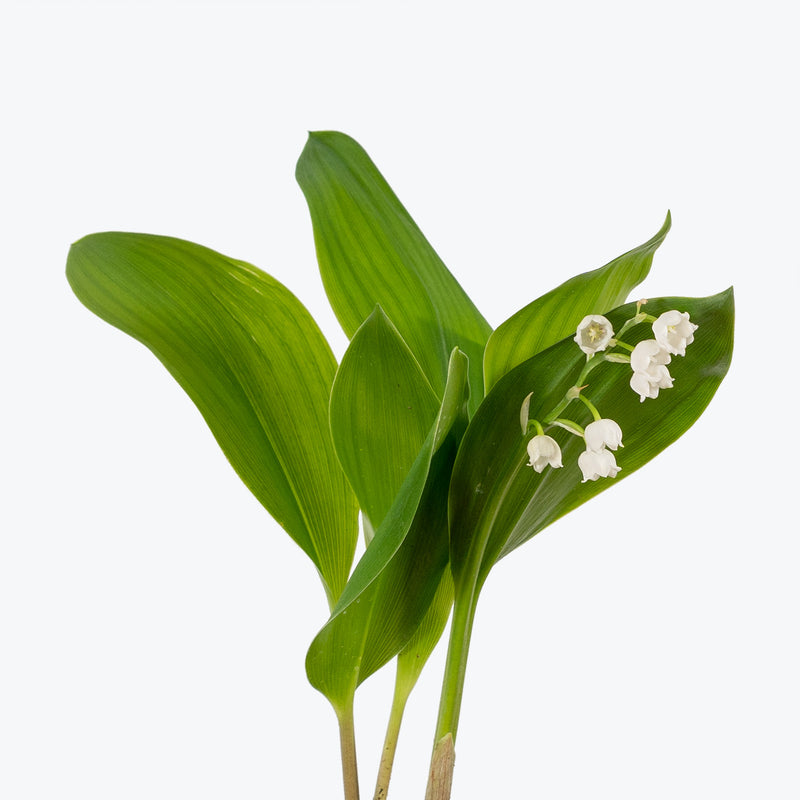
How to care for Lily of the Valley
They should not be in a position to see the sun directly, although early morning or late evening sun is fine. Filtered sunlight through a sheer curtain is best and most homes are comprised primarily of indirect sunlight. The best spot for them is where they do not see the sun during the majority of the day but still get bright, indirect light.
They will thrive in medium to bright light, but also can tolerate low light. A good medium-light place in your home would be in the middle of a room that has a regular size window. They can be placed almost anywhere in the room but remember, plants will grow based on how much light they receive.
They like the soil to stay consistently moist, but not soaking wet. Give them water whenever just the surface of the soil is starting to get dry. Expect to water more often in brighter light and less often in lower light.
They will do well in average humidity environments but will appreciate a little bit of humidity if provided, give them a mist daily or get a humidifier.
Lily of the valley is a hardy ground cover that reproduces by spreading rhizomes. It will grow vigorously in almost any spot with some shade and needs little attention to thrive once it’s established. You may want to carefully supervise it so it doesn't escape its boundaries when planted on the ground.
This plant is moderately toxic and can cause some adverse reactions when ingested so it is best to not let your pets eat it, which we advise for all plants in general. The severity of the reaction will depend on how much of the plant is ingested but, if you know your pet typically does not eat your plants, this plant will be suitable for your home..
View PlantLime Tree
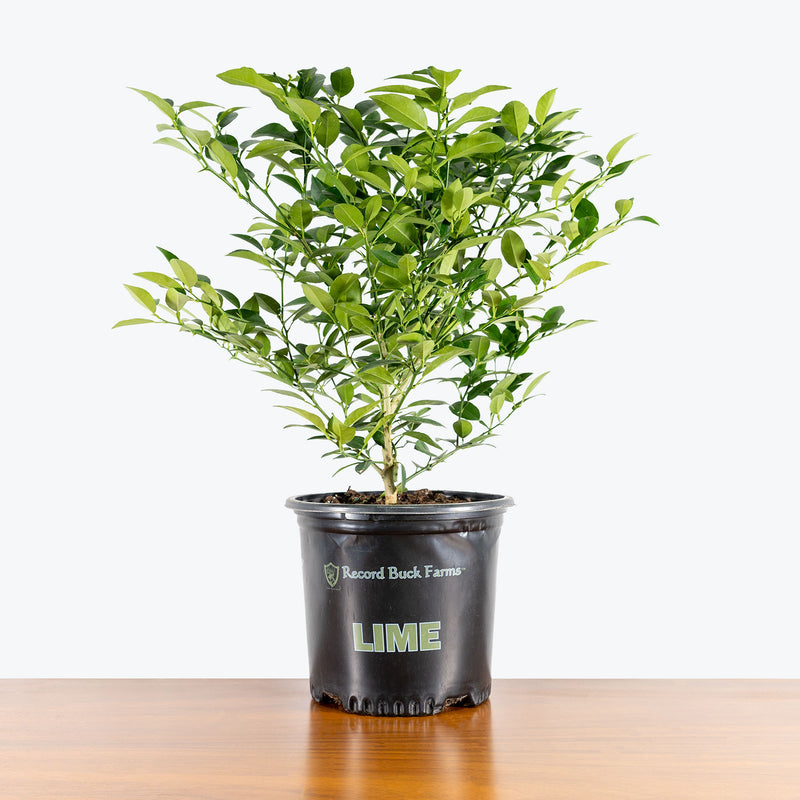
How to care for Lime Tree
They love as much sun as possible. The best spot for them is where they can see the sun during the majority of the day.
They will do best in bright light. A nice bright place inside your home would be on the window sill or a stool that is right next to a window, either with or without blinds, depending on if the plant can handle sun. Remember that plants will grow based on how much light they receive.
They need to be watered when the top half of the soil is dry to the touch. That usually takes about 1 week in an average home environment. It will vary depending on the time of year, your environment and lighting conditions, but it's always safer to give the soil a check before you water again.
They like a high humidity environment, give them a mist daily or as often as possible. Alternatively, you can put them around a humidifier. Although they won't die if they don't receive enough humidity, their leaves may have some dry, crunchy, or yellow edges.
Lime trees will not tolerate hot or cold drafts, so keep them away from all air conditioning and heating vents, as well as any open windows during the winter. Consistency is key with citrus plants. Train your plant to go outside in the warmer months by allowing the plant to sit outside in more and more sun each week. Abrupt changes in light and temperature will cause leaf drop so change environmental conditions gradually.
This plant is moderately toxic and can cause some adverse reactions when ingested so it is best to not let your pets eat it, which we advise for all plants in general. The severity of the reaction will depend on how much of the plant is ingested but, if you know your pet typically does not eat your plants, this plant will be suitable for your home..
Learn MoreView PlantLipstick Plant Black Pagoda
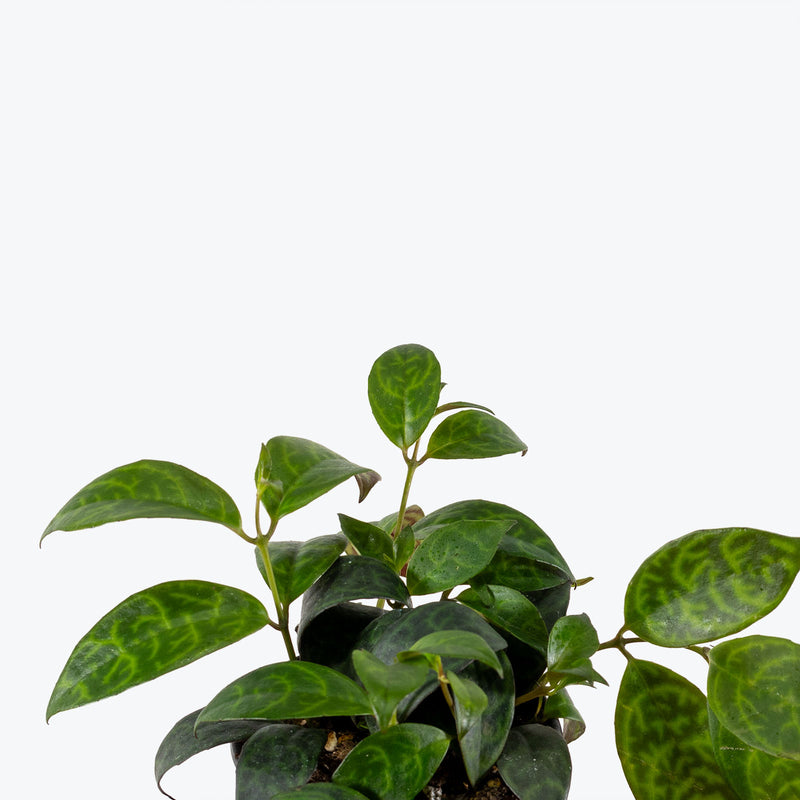
How to care for Lipstick Plant Black Pagoda
Lipstick Plant Black Pagoda should not be in a position to see the sun directly, although early morning or late evening sun is fine. Filtered sunlight through a sheer curtain is best and most homes are comprised primarily of indirect sunlight. The best spot for them is where they do not see the sun during the majority of the day but still get bright, indirect light.
Lipstick Plant Black Pagoda will do well in medium light but will grow faster with brighter light. A good medium-light place in your home would be in the middle of a room that has a regular size window. Remember that plants will grow based on how much light they receive.
Lipstick Plant Black Pagoda needs to be watered when the top half of the soil is dry to the touch. That usually takes about 1 week in an average home environment. It will vary depending on the time of year, your environment and lighting conditions, but it's always safer to underwater or give the soil a check before you water again. Expect to water more often in brighter light and less often in lower light.
Lipstick Plant Black Pagoda will do well in average humidity environments but will appreciate a little bit of humidity if provided, give them a mist daily or get a humidifier.
If your Lipstick Plant Black Pagoda is not flowering, move it to a location that receives brighter, indirect light, although morning sun or afternoon sun will be just fine, this will support a blooming period. Avoid any harsh, midday sun as this will burn the foliage.
You can feel comfortable having Lipstick Plant Black Pagoda around your home in the potential case where your pet feels like nibbling on it. However, we typically recommend keeping your pets from eating any of your houseplants..
View PlantLipstick Plant Bolero Bicolor
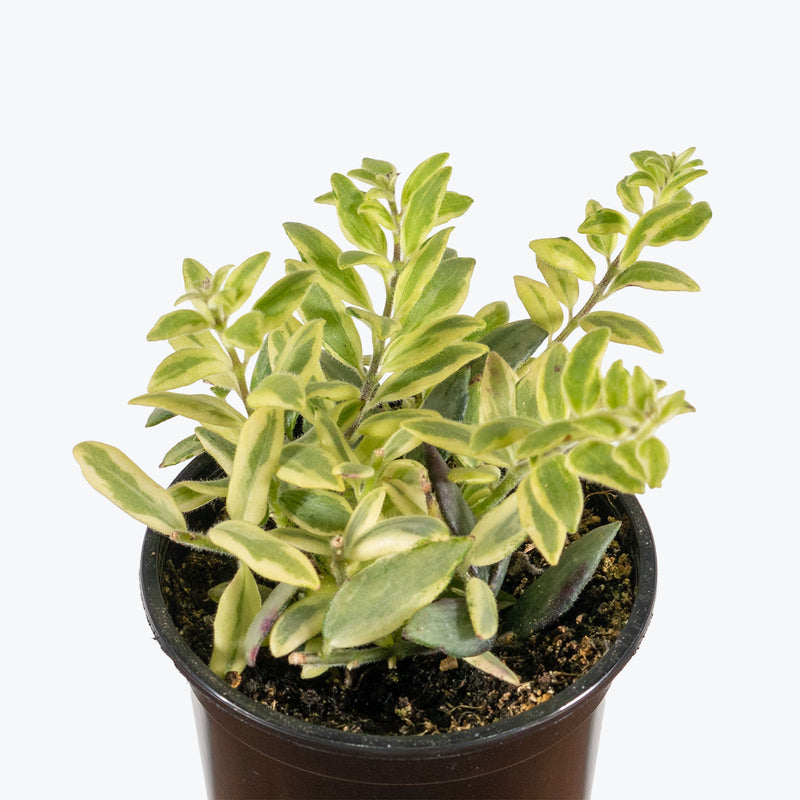
How to care for Lipstick Plant Bolero Bicolor
Lipstick Plant Bolero Bicolor should not be in a position to see the sun directly, as it is too intense for them. Filtered sunlight through a sheer curtain is fine and most homes are comprised primarily of indirect sunlight. The best spot for them is where they do not see the sun during the majority of the day but still get bright, indirect light.
Lipstick Plant Bolero Bicolor will thrive in bright light, but also can tolerate medium light. A good medium-light place in your home would be in the middle of a room that has a regular size window. They can be placed anywhere between the middle of the room and the window. Remember that plants will grow based on how much light they receive.
Lipstick Plant Bolero Bicolor needs to be watered when the top half of the soil is dry to the touch. That usually takes about 1 week in an average home environment. It will vary depending on the time of year, your environment and lighting conditions, but it's always safer to underwater or give the soil a check before you water again.
Lipstick Plant Bolero Bicolor likes a little bit of humidity, give them a mist every 2 - 3 days, making sure to only use lukewarm water, as cold water will burn the leaves.
Use a well-draining, airy soil mix (similar to orchid or epiphyte mixes) to prevent root rot. Fertilize Lipstick Plant Bolero Bicolor monthly during spring and summer with a balanced or bloom-boosting fertilizer to encourage flowering. Prune lightly after blooming to maintain shape and encourage new growth.
You can feel comfortable having Lipstick Plant Bolero Bicolor around your home in the potential case where your pet feels like nibbling on it. However, we typically recommend keeping your pets from eating any of your houseplants..
View PlantLipstick Plant Curly Rasta
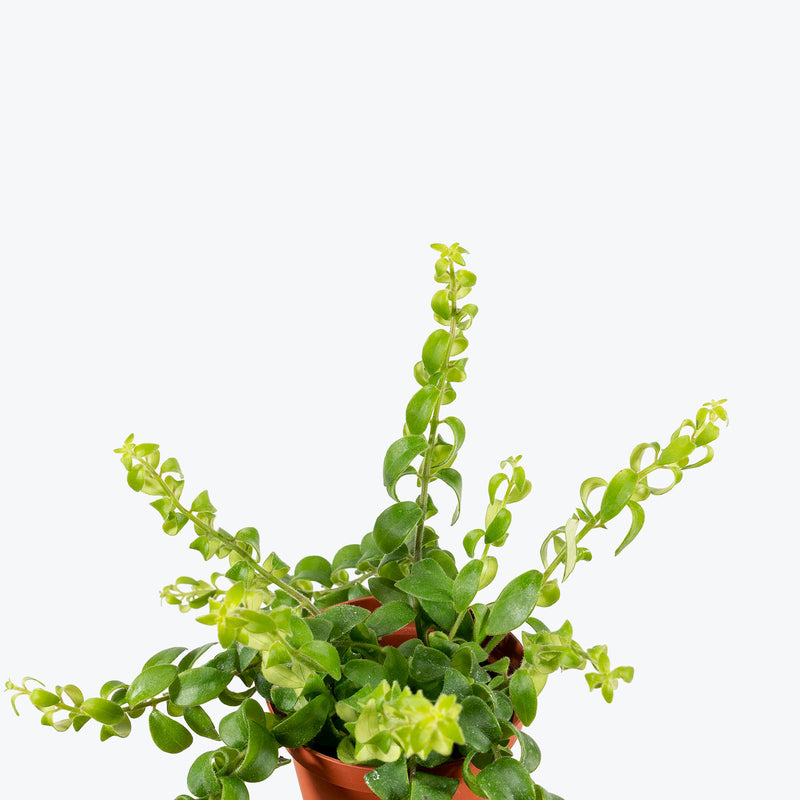
How to care for Lipstick Plant Curly Rasta
Lipstick Plant Curly Rasta should not be in a position to see the sun directly, although early morning or late evening sun is fine. Filtered sunlight through a sheer curtain is best and most homes are comprised primarily of indirect sunlight. The best spot for them is where they do not see the sun during the majority of the day but still get bright, indirect light.
Lipstick Plant Curly Rasta will do well in medium light but will grow faster with brighter light. A good medium-light place in your home would be in the middle of a room that has a regular size window. Remember that plants will grow based on how much light they receive.
Lipstick Plant Curly Rasta needs to be watered when the top half of the soil is dry to the touch. That usually takes about 1 week in an average home environment. It will vary depending on the time of year, your environment and lighting conditions, but it's always safer to underwater or give the soil a check before you water again. Expect to water more often in brighter light and less often in lower light.
Lipstick Plant Curly Rasta will do well in average humidity environments but will appreciate a little bit of humidity if provided, give them a mist daily or get a humidifier.
If your Lipstick Plant Curly Rasta vine is not blooming, consider moving it to a spot where it will receive brighter light, as that is one of the main factors in getting them to bloom successfully. Make sure the room it is in is consistently warm, otherwise, cooler temperatures can lead to leaf loss. Also, when watering, use lukewarm water to avoid burning the leaves with cold water. Regular pruning can help maintain its shape and promote fuller growth. Keep an eye out for common pests like aphids and spider mites, especially when humidity is low.
You can feel comfortable having Lipstick Plant Curly Rasta around your home in the potential case where your pet feels like nibbling on it. However, we typically recommend keeping your pets from eating any of your houseplants..
View PlantLipstick Plant Japhrolepis
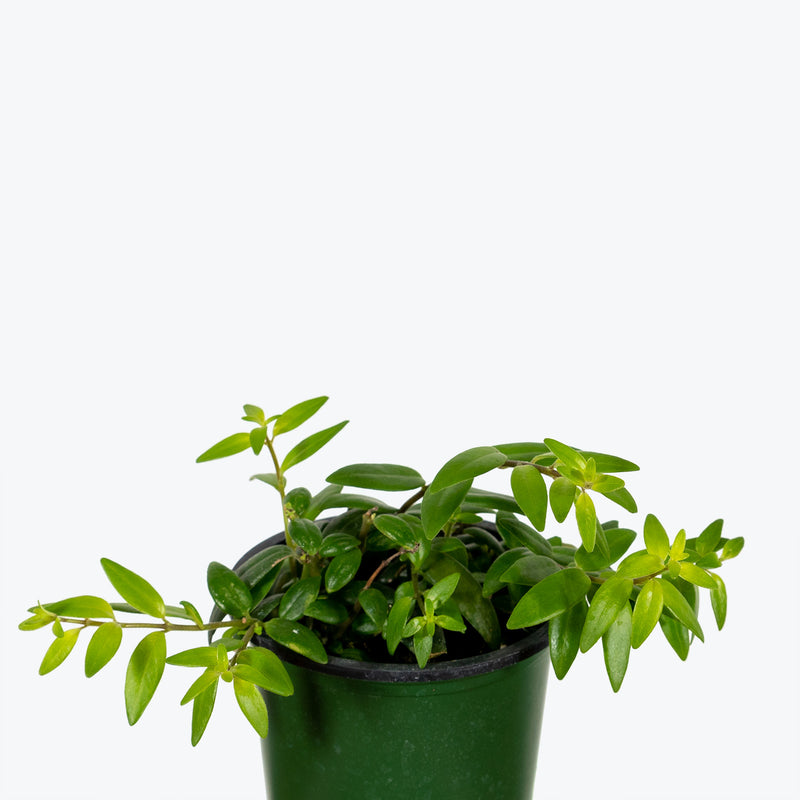
How to care for Lipstick Plant Japhrolepis
They should not be in a position to see the sun directly, although early morning or late evening sun is fine. Filtered sunlight through a sheer curtain is best and most homes are comprised primarily of indirect sunlight. The best spot for them is where they do not see the sun during the majority of the day but still get bright, indirect light.
They will thrive in bright light, but also can tolerate medium light. A good medium-light place in your home would be in the middle of a room that has a regular size window. They can be placed anywhere between the middle of the room and the window. Remember that plants will grow based on how much light they receive.
They need to be watered when the top half of the soil is dry to the touch. That usually takes about 1 week in an average home environment. It will vary depending on the time of year, your environment and lighting conditions, but it's always safer to underwater or give the soil a check before you water again. Expect to water more often in brighter light and less often in lower light.
They will do well in average humidity environments but will appreciate a little bit of humidity if provided, give them a mist daily or get a humidifier.
If your lipstick vine is not blooming, consider moving it to a spot where it will receive brighter light, as that is one of the main factors in getting them to bloom successfully. Make sure the room it is in is consistently warm, otherwise, cooler temperatures can lead to leaf loss. Also, when watering, use lukewarm water so as to avoid burning the leaves with cold water.
You can feel comfortable having this plant around your home in the potential case where your pet feels like nibbling on it. However, we typically recommend keeping your pets from eating any of your houseplants..
View PlantLipstick Plant Mona Lisa

How to care for Lipstick Plant Mona Lisa
They should not be in a position to see the sun directly, as it is too intense for them. Filtered sunlight through a sheer curtain is fine and most homes are comprised primarily of indirect sunlight. The best spot for them is where they do not see the sun during the majority of the day but still get bright, indirect light.
They will do best in bright light. A nice bright place inside your home would be on the window sill or a stool that is right next to a window, either with or without blinds, depending on if the plant can handle sun. Remember that plants will grow based on how much light they receive.
They need to be watered when the top half of the soil is dry to the touch. That usually takes about 1 week in an average home environment. It will vary depending on the time of year, your environment and lighting conditions, but it's always safer to underwater or give the soil a check before you water again.
They like a little bit of humidity, give them a mist every 2 - 3 days, making sure to only use lukewarm water, as cold water will burn the leaves.
If your lipstick vine is not blooming, consider moving it to a spot where it will receive brighter light, as that is one of the main factors in getting them to bloom successfully. Make sure the room it is in is consistently warm, otherwise, cooler temperatures can lead to leaf loss. Also, when watering, use lukewarm water so as to avoid burning the leaves with cold water.
You can feel comfortable having this plant around your home in the potential case where your pet feels like nibbling on it. However, we typically recommend keeping your pets from eating any of your houseplants..
View PlantLipstick Plant Mona Lisa Variegated
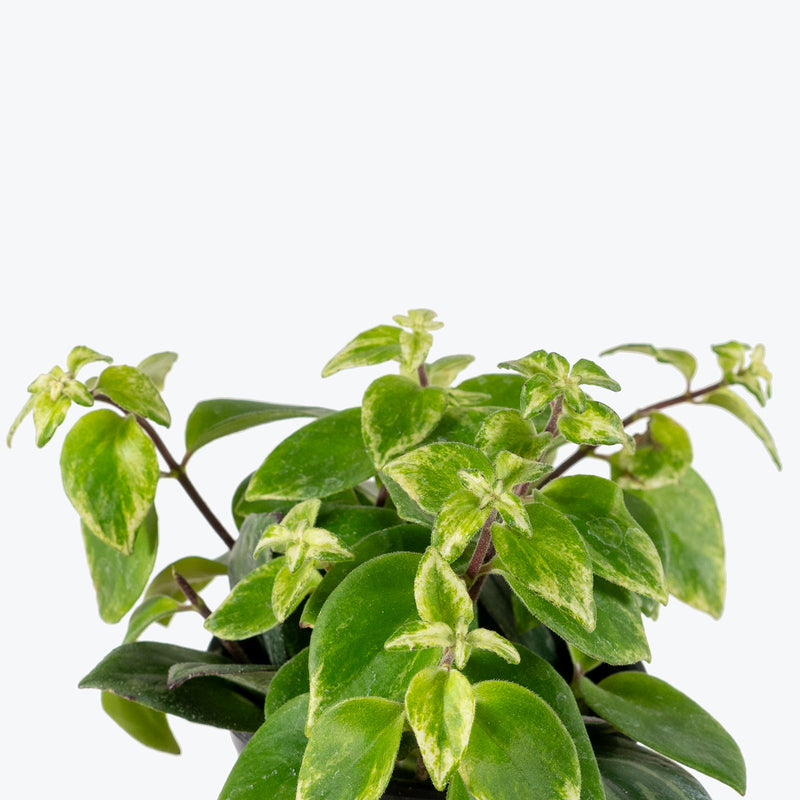
How to care for Lipstick Plant Mona Lisa Variegated
Variegated Lipstick Plant should not be in a position to see the sun directly, as it is too intense for them. Filtered sunlight through a sheer curtain is fine and most homes are comprised primarily of indirect sunlight. The best spot for them is where they do not see the sun during the majority of the day but still get bright, indirect light.
Variegated Lipstick Plant will do best in bright light. A nice bright place inside your home would be on the window sill or a stool that is right next to a window, either with or without blinds, depending on if the plant can handle sun. Remember that plants will grow based on how much light they receive.
Variegated Lipstick Plant needs to be watered when the top half of the soil is dry to the touch. That usually takes about 1 week in an average home environment. It will vary depending on the time of year, your environment and lighting conditions, but it's always safer to underwater or give the soil a check before you water again.
Variegated Lipstick Plant likes a little bit of humidity, give them a mist every 2 - 3 days, making sure to only use lukewarm water, as cold water will burn the leaves.
If your Variegated Lipstick Plant is not blooming, consider moving it to a spot where it will receive brighter light, as that is one of the main factors in getting them to bloom successfully. Make sure the room it is in is consistently warm, otherwise, cooler temperatures can lead to leaf loss. Also, when watering, use lukewarm water so as to avoid burning the leaves with cold water. Prune lightly after flowering to maintain a compact shape and encourage branching. Repot every couple of years to refresh the soil and allow for continued growth.
You can feel comfortable having Variegated Lipstick Plant around your home in the potential case where your pet feels like nibbling on it. However, we typically recommend keeping your pets from eating any of your houseplants..
View PlantLipstick Plant Tangerine
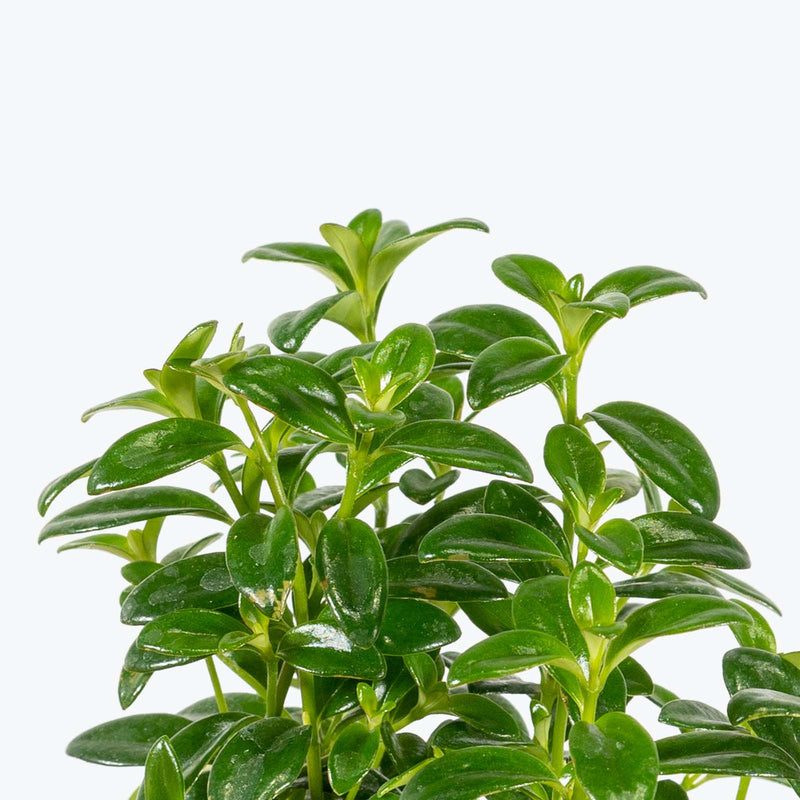
How to care for Lipstick Plant Tangerine
They should not be in a position to see the sun directly, as it is too intense for them. Filtered sunlight through a sheer curtain is fine and most homes are comprised primarily of indirect sunlight. The best spot for them is where they do not see the sun during the majority of the day but still get bright, indirect light.
They will do best in bright light. A nice bright place inside your home would be on the window sill or a stool that is right next to a window, either with or without blinds, depending on if the plant can handle sun. Remember that plants will grow based on how much light they receive.
They need to be watered when the top half of the soil is dry to the touch. That usually takes about 1 week in an average home environment. It will vary depending on the time of year, your environment and lighting conditions, but it's always safer to underwater or give the soil a check before you water again.
They like a little bit of humidity, give them a mist every 2 - 3 days, making sure to only use lukewarm water, as cold water will burn the leaves.
If your lipstick vine is not blooming, consider moving it to a spot where it will receive brighter light, as that is one of the main factors in getting them to bloom successfully. Make sure the room it is in is consistently warm, otherwise, cooler temperatures can lead to leaf loss. Also, when watering, use lukewarm water so as to avoid burning the leaves with cold water.
You can feel comfortable having this plant around your home in the potential case where your pet feels like nibbling on it. However, we typically recommend keeping your pets from eating any of your houseplants..
View PlantLipstick Plant Thai Pink
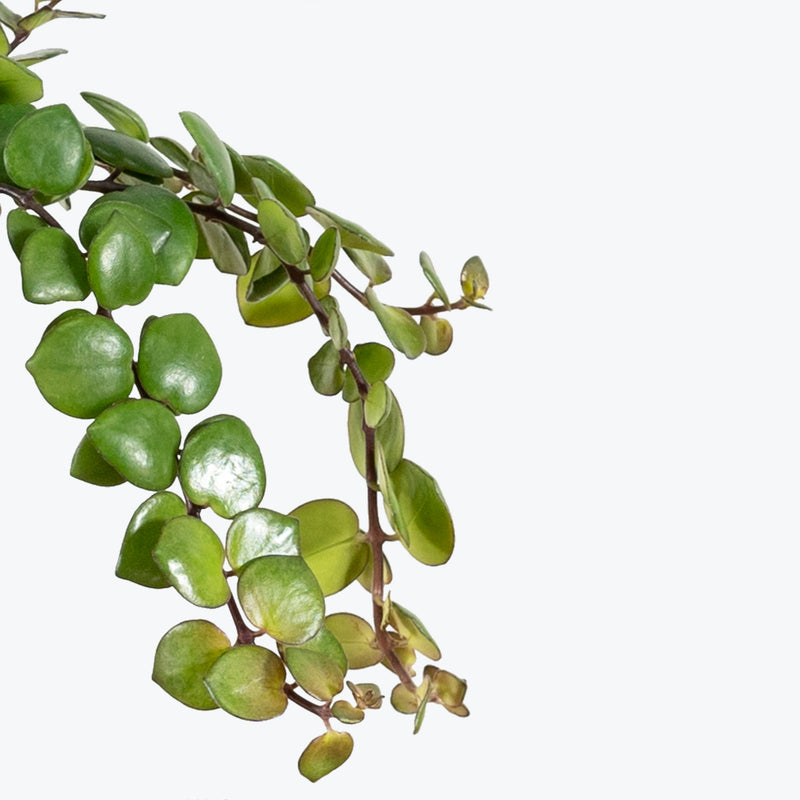
How to care for Lipstick Plant Thai Pink
They should not be in a position to see the sun directly, although early morning or late evening sun is fine. Filtered sunlight through a sheer curtain is best and most homes are comprised primarily of indirect sunlight. The best spot for them is where they do not see the sun during the majority of the day but still get bright, indirect light.
They will do best in bright light. A nice bright place inside your home would be on the window sill or a stool that is right next to a window, either with or without blinds, depending on if the plant can handle sun. Remember that plants will grow based on how much light they receive.
They need to be watered when the top half of the soil is dry to the touch. That usually takes about 1 week in an average home environment. It will vary depending on the time of year, your environment and lighting conditions, but it's always safer to underwater or give the soil a check before you water again. Expect to water more often in brighter light and less often in lower light.
They will do well in average humidity environments but will appreciate a little bit of humidity if provided, give them a mist daily or get a humidifier.
If your lipstick vine is not blooming, consider moving it to a spot where it will receive brighter light, as that is one of the main factors in getting them to bloom successfully. Make sure the room it is in is consistently warm, otherwise, cooler temperatures can lead to leaf loss. Also, when watering, use lukewarm water so as to avoid burning the leaves with cold water.
You can feel comfortable having this plant around your home in the potential case where your pet feels like nibbling on it. However, we typically recommend keeping your pets from eating any of your houseplants..
View PlantLipstick Plant Twister

How to care for Lipstick Plant Twister
Lipstick Plant Twister should not be in a position to see the sun directly, although early morning or late evening sun is fine. Filtered sunlight through a sheer curtain is best and most homes are comprised primarily of indirect sunlight. The best spot for them is where they do not see the sun during the majority of the day but still get bright, indirect light.
Lipstick Plant Twister will do well in medium light but will grow faster with brighter light. A good medium-light place in your home would be in the middle of a room that has a regular size window. Remember that plants will grow based on how much light they receive.
Lipstick Plant Twister needs to be watered when the top half of the soil is dry to the touch. That usually takes about 1 week in an average home environment. It will vary depending on the time of year, your environment and lighting conditions, but it's always safer to underwater or give the soil a check before you water again. Expect to water more often in brighter light and less often in lower light.
Lipstick Plant Twister will do well in average humidity environments but will appreciate a little bit of humidity if provided, give them a mist daily or get a humidifier.
If your Lipstick Plant Twister vine is not blooming, consider moving it to a spot where it will receive brighter light, as that is one of the main factors in getting them to bloom successfully. Make sure the room it is in is consistently warm, otherwise, cooler temperatures can lead to leaf loss. Also, when watering, use lukewarm water to avoid burning the leaves with cold water. Use a loose, well-draining soil mix, such as orchid bark, perlite, and peat, to mimic its natural epiphytic environment. Fertilize monthly during spring and summer with a diluted, balanced fertilizer. Pinch back stems after flowering to encourage branching and maintain its compact, curling shape. Avoid cold drafts and overwatering, as Aeschynanthus species are sensitive to root rot.
You can feel comfortable having Lipstick Plant Twister around your home in the potential case where your pet feels like nibbling on it. However, we typically recommend keeping your pets from eating any of your houseplants..
View PlantLittle Leaf Jade Plant
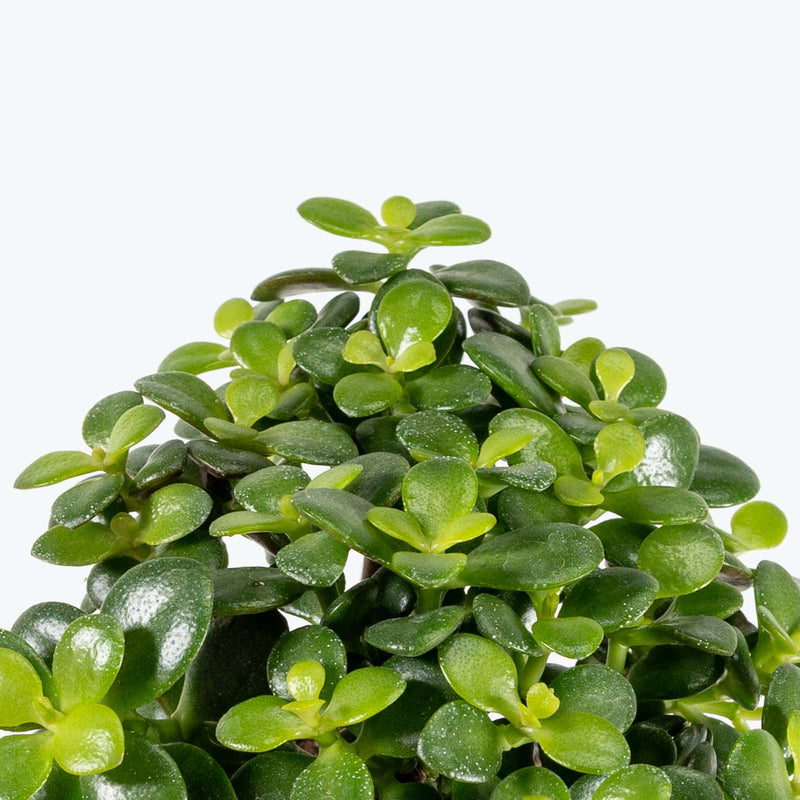
How to care for Little Leaf Jade Plant
Little Leaf Jade Plant enjoys some direct sun, but they'll also do well in bright, indirect light. It is best to place this plant somewhere where it will receive some nice morning sun, or a couple hours of afternoon sun, and then indirect light the rest of the day.
Little Leaf Jade Plant will do best in bright light. A nice bright place inside your home would be on the window sill or a stool that is right next to a window, either with or without blinds, depending on if the plant can handle sun. Remember that plants will grow based on how much light they receive.
Little Leaf Jade Plant likes the soil to be completely dry before the next watering. That usually takes about 4 weeks in an average home environment. It will vary depending on the time of year, your environment and lighting conditions, but for them, it's always safer to underwater or water when you see signs of lack of water (i.e. wrinkly or soft leaves). Water a little more often in the warmer months.
Little Leaf Jade Plant can live in any average home humidity condition and are fairly hardy.
During the growing season (spring and summer), you can fertilize the Little Leaf Jade with a diluted, balanced fertilizer every few months. Be careful not to overwater, especially in the winter months when the plant's growth slows down.
Little Leaf Jade Plant is moderately toxic and can cause some adverse reactions when ingested so it is best to not let your pets eat it, which we advise for all plants in general. The severity of the reaction will depend on how much of the plant is ingested but, if you know your pet typically does not eat your plants, this plant will be suitable for your home..
View PlantLiving Stone Lapidaria
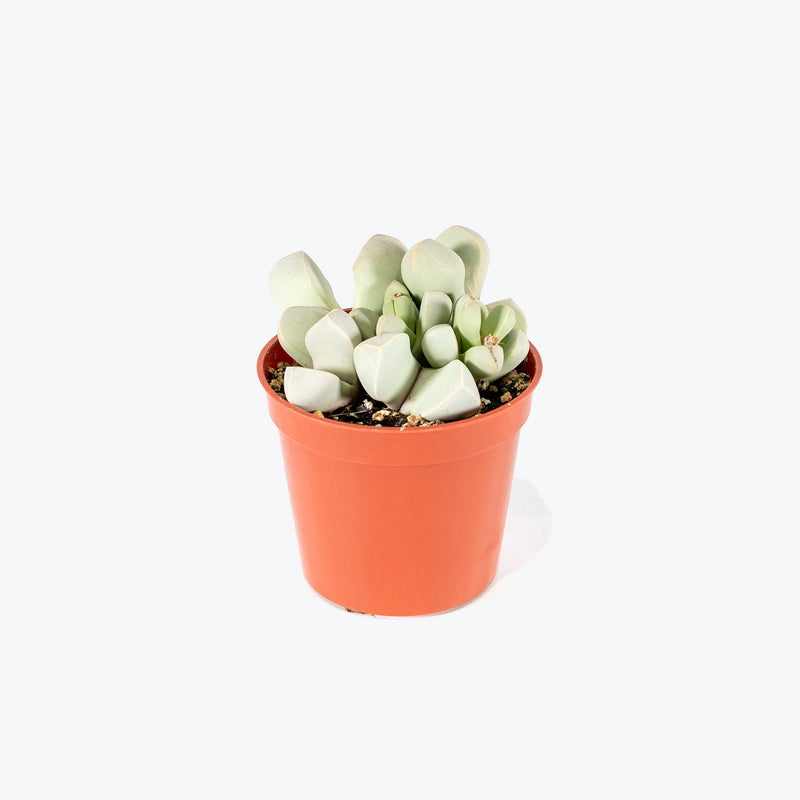
How to care for Living Stone Lapidaria
They enjoy some direct sun, but they'll also do well in bright, indirect light. It is best to place this plant somewhere where it will receive some nice morning sun, or a couple hours of afternoon sun, and then indirect light the rest of the day.
They will do best in bright light. A nice bright place inside your home would be on the window sill or a stool that is right next to a window, either with or without blinds, depending on if the plant can handle sun. Remember that plants will grow based on how much light they receive.
They like the soil to be completely dry before the next watering. That usually takes about 4 weeks in an average home environment. It will vary depending on the time of year, your environment and lighting conditions, but for them, it's always safer to underwater or water when you see signs of lack of water (i.e. wrinkly or soft leaves). Water a little more often in the warmer months.
Their humidity requirement is low, so do not mist them or put them in a terrarium.
They are dormant in both summer and winter. They will require watering only once or twice in the fall and again in the spring. Allow the soil to dry out completely or wait for the leaves to be a bit winkled between watering.
You can feel comfortable having this plant around your home in the potential case where your pet feels like nibbling on it. However, we typically recommend keeping your pets from eating any of your houseplants..
View PlantLiving Stone Lithops
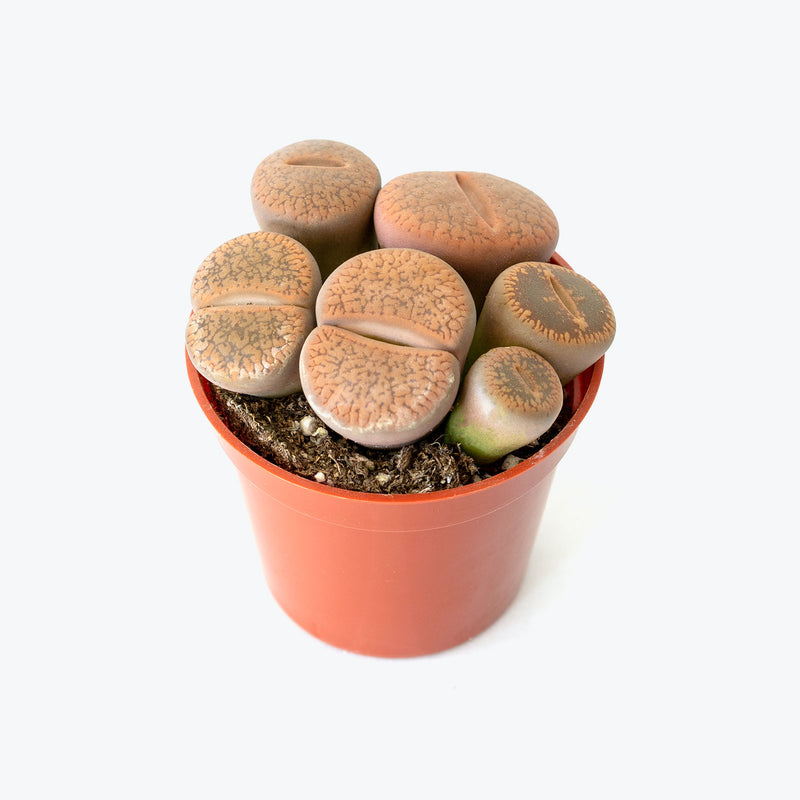
How to care for Living Stone Lithops
Living Stone Lithops enjoy some direct sun, but they'll also do well in bright, indirect light. It is best to place this plant somewhere where it will receive some nice morning sun, or a couple hours of afternoon sun, and then indirect light the rest of the day.
Living Stone Lithops will do best in bright light. A nice bright place inside your home would be on the window sill or a stool that is right next to a window, either with or without blinds, depending on if the plant can handle sun. Remember that plants will grow based on how much light they receive.
Living Stone Lithops like the soil to be completely dry before the next watering. That usually takes about 4 weeks in an average home environment. It will vary depending on the time of year, your environment and lighting conditions, but for them, it's always safer to underwater or water when you see signs of lack of water (i.e. wrinkly or soft leaves). Water a little more often in the warmer months.
Their humidity requirement is low, so do not mist Living Stone Lithops or put them in a terrarium.
Avoid any water on the leaves to prevent rot. It’s essential not to water Lithops while they are splitting, which is when the old leaf pair is being replaced by new growth. Try not disturbing Lithops as much as possible as they do not like to be moved or touched frequently. When repotting, use a well-draining cactus or succulent soil mix and a pot with good drainage. Fertilize sparingly, only once a year in the early spring, using a cactus fertilizer diluted to half the recommended strength. With less light, Lithops will grow tall and skinny, versus in a high light environment, where they will stay short and chubby. If you ever see your living stone is growing too tall, give it more light.
You can feel comfortable having Living Stone Lithops around your home in the potential case where your pet feels like nibbling on it. However, we typically recommend keeping your pets from eating any of your houseplants..
View PlantLiving Stone Titanopsis
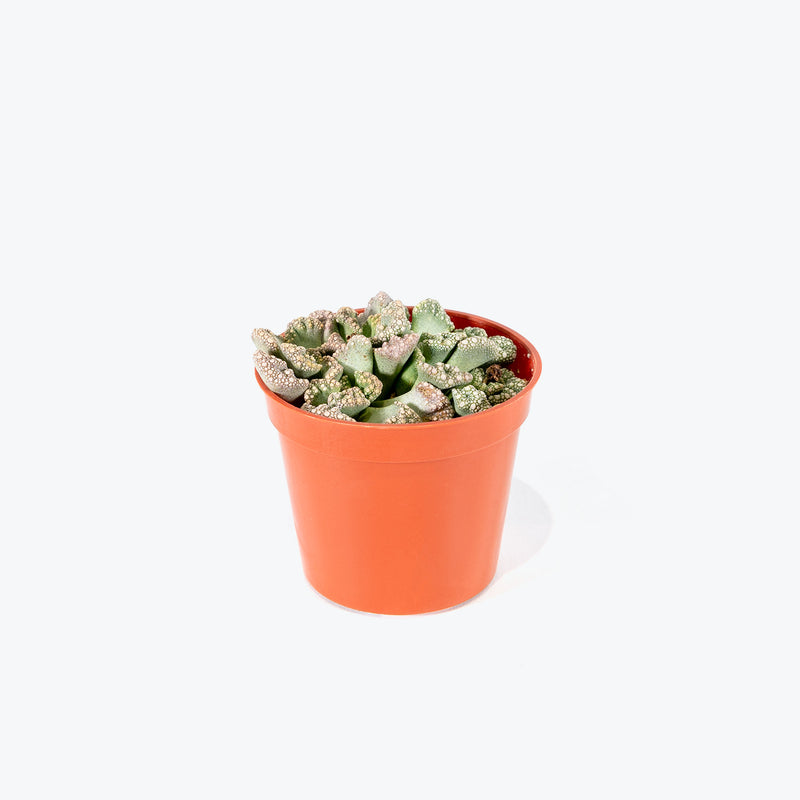
How to care for Living Stone Titanopsis
They enjoy some direct sun, but they'll also do well in bright, indirect light. It is best to place this plant somewhere where it will receive some nice morning sun, or a couple hours of afternoon sun, and then indirect light the rest of the day.
They will do best in bright light. A nice bright place inside your home would be on the window sill or a stool that is right next to a window, either with or without blinds, depending on if the plant can handle sun. Remember that plants will grow based on how much light they receive.
They like the soil to be completely dry before the next watering. That usually takes about 4 weeks in an average home environment. It will vary depending on the time of year, your environment and lighting conditions, but for them, it's always safer to underwater or water when you see signs of lack of water (i.e. wrinkly or soft leaves). Water a little more often in the warmer months.
Their humidity requirement is low, so do not mist them or put them in a terrarium.
Like many South African desert plants, Concrete Leaf Living Stone tends to become dormant or semi-dormant during the height of summer to conserve moisture. They will require watering only once or twice in the fall and again in the spring. Allow the soil to dry out completely or wait for the leaves to be a bit winkled between watering.
You can feel comfortable having this plant around your home in the potential case where your pet feels like nibbling on it. However, we typically recommend keeping your pets from eating any of your houseplants..
View PlantLucky Bamboo

How to care for Lucky Bamboo
Lucky Bamboo should not be in a position to see the sun directly, although early morning or late evening sun is fine. Filtered sunlight through a sheer curtain is best and most homes are comprised primarily of indirect sunlight. The best spot for them is where they do not see the sun during the majority of the day but still get bright, indirect light.
Lucky Bamboo will do well in medium light but will grow faster with brighter light. A good medium-light place in your home would be in the middle of a room that has a regular size window. Remember that plants will grow based on how much light they receive.
Lucky Bamboo needs to be watered when the top half of the soil is dry to the touch. That usually takes about 1 week in an average home environment. It will vary depending on the time of year, your environment and lighting conditions, but it's always safer to underwater or give the soil a check before you water again.
Lucky Bamboo will do well in average humidity environments but will appreciate a little bit of humidity if provided, give them a mist daily or get a humidifier.
Avoid allowing the soil to dry completely. Be sure to water slowly near the base of the plant as Lucky Bamboo has shallow roots. Use a balanced liquid fertilizer sparingly every few months during the growing season is sufficient. Keep an eye out for pests like spider mites, especially under dry conditions.
Lucky Bamboo is moderately toxic and can cause some adverse reactions when ingested so it is best to not let your pets eat it, which we advise for all plants in general. The severity of the reaction will depend on how much of the plant is ingested but, if you know your pet typically does not eat your plants, this plant will be suitable for your home..
View PlantLudisia Discolor
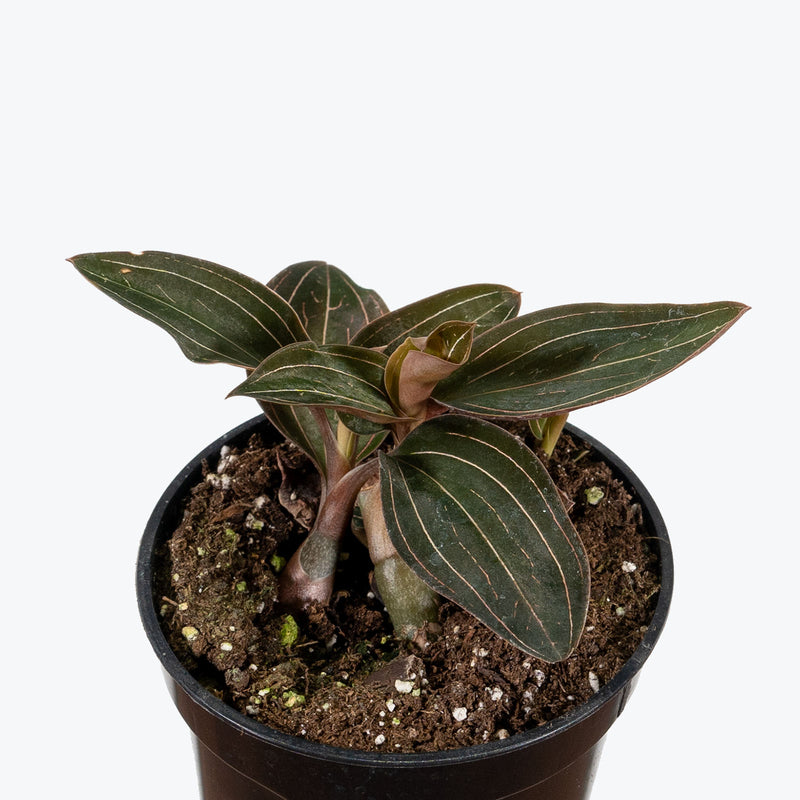
How to care for Ludisia Discolor
They should not be in a position to see the sun directly, although early morning or late evening sun is fine. Filtered sunlight through a sheer curtain is best and most homes are comprised primarily of indirect sunlight. The best spot for them is where they do not see the sun during the majority of the day but still get bright, indirect light.
They will thrive in medium to bright light, but also can tolerate low light. A good medium-light place in your home would be in the middle of a room that has a regular size window. They can be placed almost anywhere in the room but remember, plants will grow based on how much light they receive.
They need to be watered when the top half of the soil is dry to the touch. That usually takes about 1 week in an average home environment. It will vary depending on the time of year, your environment and lighting conditions, but it's always safer to underwater or give the soil a check before you water again. Expect to water more often in brighter light and less often in lower light.
They like a high humidity environment, give them a mist daily or as often as possible. Alternatively, you can put them around a humidifier. Although they won't die if they don't receive enough humidity, their leaves may have some dry, crunchy, or yellow edges.
Although they are tolerant of medium to lower light, bright, indirect light (with some morning sun) would be ideal if you wish to promote blooms on your plant - slightly cooler nighttime temperatures will also aid in the process. Since they are terrestrial orchids and not epiphytes, your plant will want to stay potted in a potting soil mixture rather than just wood chips or orchid bark.
You can feel comfortable having this plant around your home in the potential case where your pet feels like nibbling on it. However, we typically recommend keeping your pets from eating any of your houseplants..
View Plant